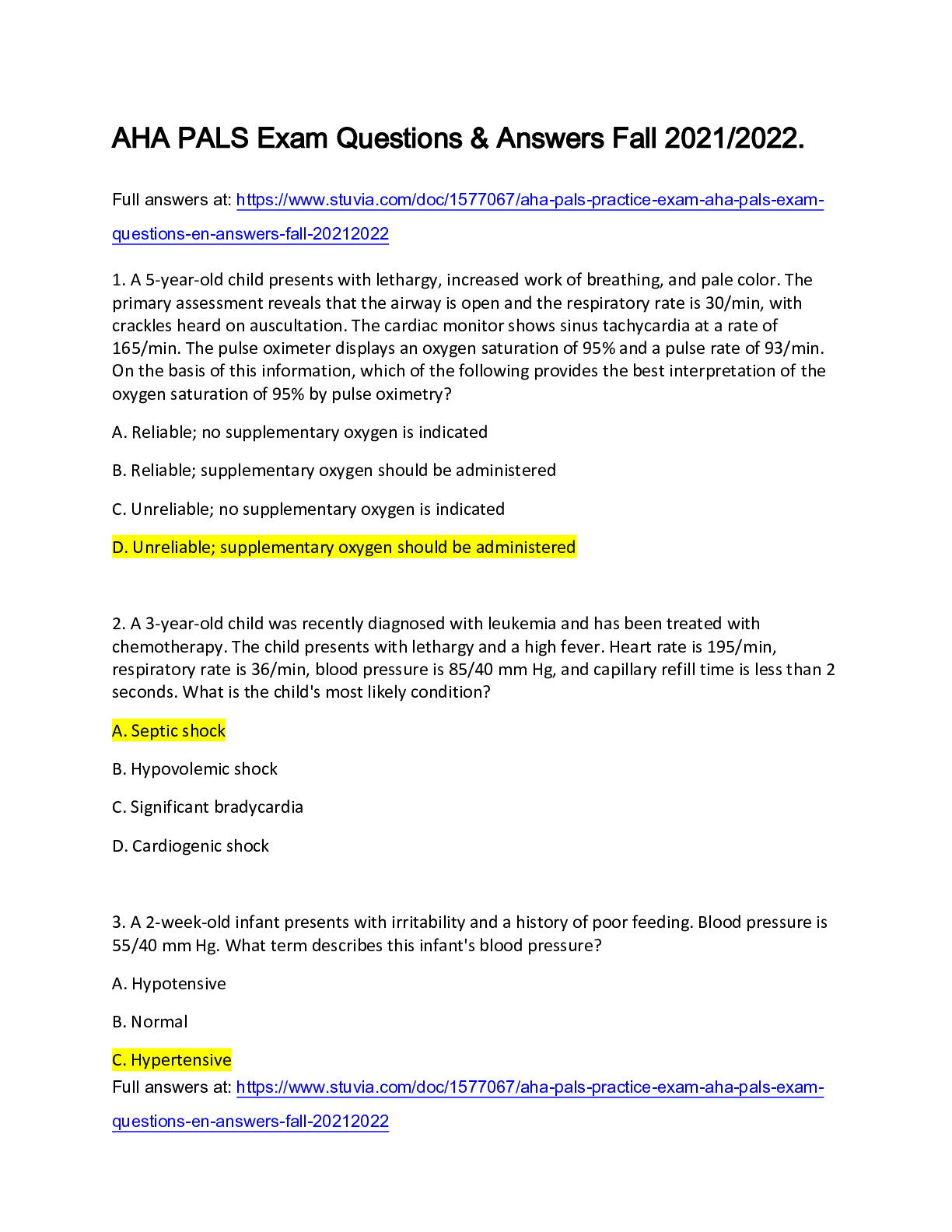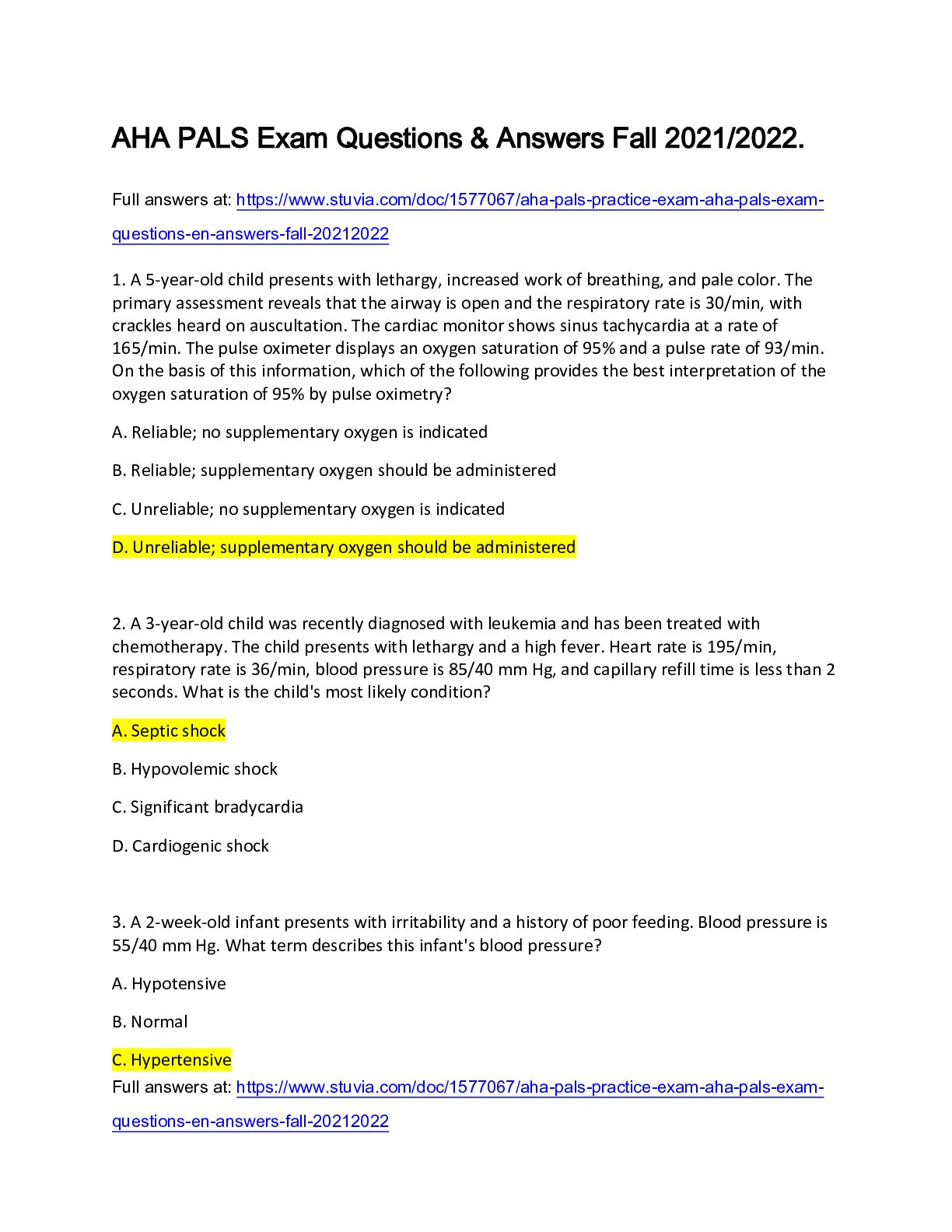AHA PALS Exam Questions & Answers Fall 2021/2022.
Course
Project Management
Subject
Chemistry
Category
Questions and Answers
Pages
19
Uploaded By
ATIPROS
Preview 4 out of 19 Pages


Download all 19 pages for $ 9.50
Reviews (0)
$9.50
